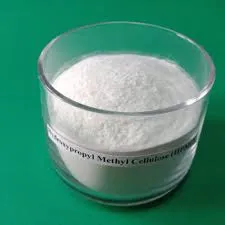
Jūl . 01, 2024 15:19 Back to list
What is HPMC? (Hydroxypropyl Methylcellulose) | Detailed Explainer
What is HPMC? (Hydroxypropyl Methylcellulose) | Detailed Explainer
One of the most common queries we receive is what is HPMC and what are the health benefits of this particular polymer to our body. In this article, we will go through the basics of this wonderous substance and its uses.
What is HPMC?
Characterized as off-white, HPMC is a cellulose polymer that has undergone chemical modification but is still considered to be safe for consumption by people. Full formulae written as Hydroxypropyl methylcellulose is a non-toxic, odorless, water-soluble polymer that is used in many industries for its hydrophilic properties. It is also used as a food additive in the US and cosmetics for its moisturizing and smoothing effects. It should be noted that Hydroxypropyl methylcellulose cannot be digested by the human digestive system and passes through the digestive tract as it is.
HPMC was first discovered in 1891, but it wasn't until 1951 that the pharmaceutical industry started using HPMC in its products. It was recognized as a safe drug delivery system when it was used with other drugs that were poorly absorbed or eliminated from the body. In 1967, HPMC was approved by the FDA for use in over-the-counter medicines such as cough syrups and throat sprays, as well as topical creams and gels for the treatment of minor burns and skin conditions such as eczema or psoriasis. In today's world, many consumers are using natural remedies on their skin or seeking alternative treatments for chronic diseases such as diabetes, heart disease, and high blood pressure.
HPMC
What is HPMC used for?
It is most frequently utilized in vegan-friendly products as a gelatin and gluten substitute. HPMC can be used as toothpaste, mouthwash, and other oral care products and cosmetics. It acts as a moisturizer on the skin, but it's not approved to be used in that capacity by the FDA. HPMC is used in medicine to help prevent or treat diarrhea caused by certain antibiotics or other medications. It can also be used as an ointment for wounds or burns because it provides relief from pain and healing without leaving behind any scarring or discoloration.
In cosmetics, HPMC is used as a humectant to keep skin hydrated and supple. It allows the skin to breathe and prevents clogged pores from forming due to sebum production by the sebaceous glands. In the pharmaceutical industry, HPMC can be used as an excipient or diluent for certain drugs that require slow releases such as tablets or capsules. HPMC does not dissolve easily in water but dissolves easily in alcohols like methanol and ethanol which makes it ideal for use in these drugs due to its low toxicity level compared to other chemicals used currently.
HPMC is also used by treating polymers with hydrochloric acid and then subjecting them to high temperatures. HPMC has been used for decades as an additive in pharmaceuticals and personal care products. HPMC is also used as an ingredient in many foods. Due to semi-synthetic manufacturing procedures, hypromellose is slightly more expensive to produce than gelatin because it is a vegetarian alternative but is a better choice for our bodies.
What is HPMC made of?
HPMC polymer is frequently referred to as natural. Of course, the capsules you purchase may or may not contain natural ingredients, but the polymer itself is a natural substance. Keep in mind that where the HPMC capsule has a color coating, the coating may be artificial. Titanium dioxide, a synthetic colorant that is frequently used to tint capsules, carries some health risks and is subject to precautions. Capsules can be naturally colored, but only in specific hues. Chlorophyll can be used to create different shades of green, and a purple carrot extract can be used to create a purple capsule shell. HPMC is listed as an E464 food ingredient, which means that it may cause bloating, diarrhea, or constipation if used in large quantities.
Wrapping Up:
HPMC is a vegan-friendly polymer that enables companies to make supplements devoid of additives. Tablet production calls for glue, binders, fillers, and coating. By using an HPMC capsule, you can minimize the number of additional ingredients needed by only putting the active ingredient inside thus having big implications in the industry.
-
Versatile Hpmc Uses in Different Industries
NewsJun.19,2025
-
Redispersible Powder's Role in Enhancing Durability of Construction Products
NewsJun.19,2025
-
Hydroxyethyl Cellulose Applications Driving Green Industrial Processes
NewsJun.19,2025
-
Exploring Different Redispersible Polymer Powder
NewsJun.19,2025
-
Choosing the Right Mortar Bonding Agent
NewsJun.19,2025
-
Applications and Significance of China Hpmc in Modern Industries
NewsJun.19,2025








